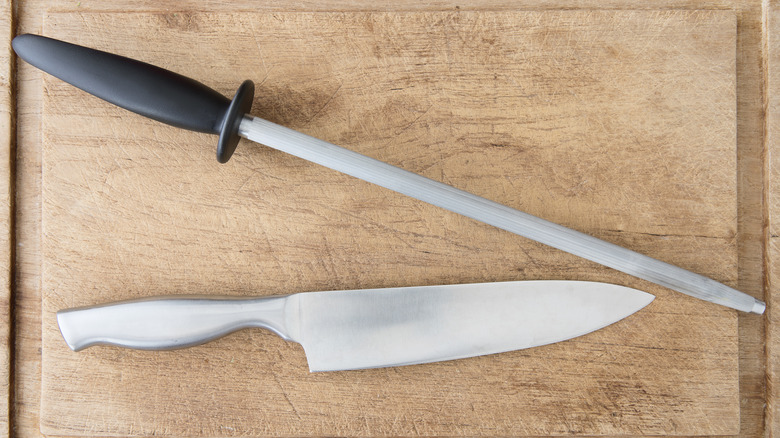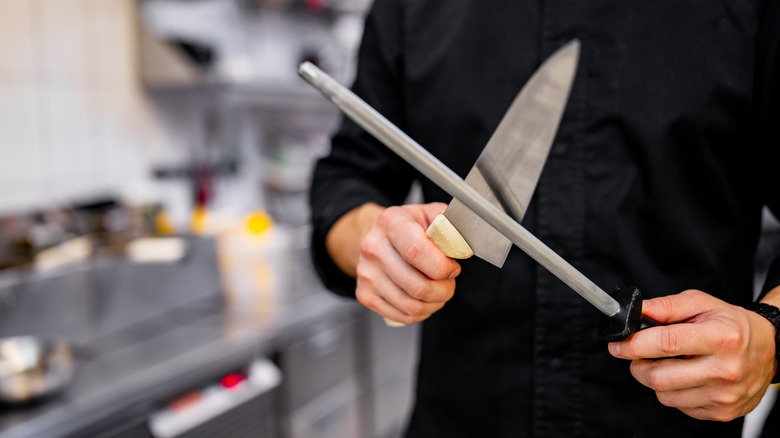No, That Metal Honing Rod In Your Knife Block Isn't A Sharpener
Knife sets, particularly those that come with a countertop block, usually include a long metal rod that is clearly not intended for cutting. Some call them knife sharpeners, and while they are used against the blades of knives, they are not sharpeners. They're called honing steels, and they help keep the edge of your knife straight.
Even if you have pieced together your knives and don't have a knife block, you should have a honing steel on hand to keep your well-chosen chef's knife in good shape. Every time you use your knives for slicing, dicing, or chopping, the sharp blade microscopically begins to bend and lean. Over time, the edge becomes dull and doesn't cut as well as it used to, especially if you're making the major knife mistake of using it to scrape your cutting board.
Honing steels should be used every time you pull out your knife, right before you start cutting your ingredients. By continuously sliding the knife blade down the steel, you are straightening that edge out, which makes the knife cut better. Knife sharpeners, on the other hand, actually remove metal fibers from your knives, essentially shaving the blade. Honing steels don't shave off any metal — they just reshape.
How to use a honing steel
There are a couple of different ways to use a honing rod. One method is to hold the rod vertically so that the tip is resting on a cutting board. Hold your knife so the wide heel (opposite of the tip) of the blade is resting at a slight angle against the base of the rod (where the handle is). Pull the blade downwards and towards you so that the entire edge of the blade runs against the grooves of the rod. Repeat on the other side of the blade so that both the right and left sides come into contact with the steel.
You can also hold the honing steel with one hand and your knife in the other and use the same technique. Start with the heel of the knife on the base of the rod and pull the blade out toward the tip. In order to make sure the entire blade gets honed, your hand will move in a natural arc shape — move the blade, not the honing rod.
You can test your blade by cutting something delicate, like perfect tomato slices or some soft herbs. You should only have to apply minimal pressure to cut right through these things. If not, try honing your knife again. If your knives still aren't performing as you'd like them to, it might be time to invest in a sharpener. They come in a lot of different forms, such as manual or electric styles where you pull blades through slots lined with a gritty surface and whetstones made of novaculite.

